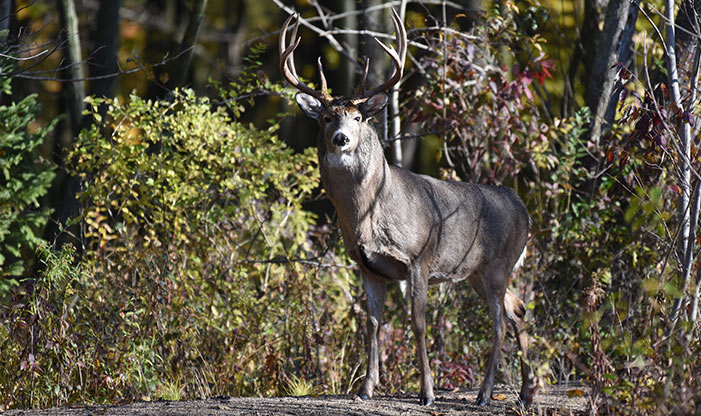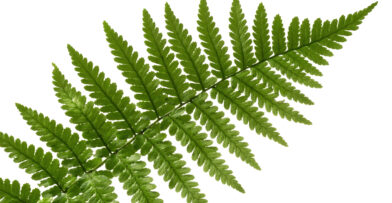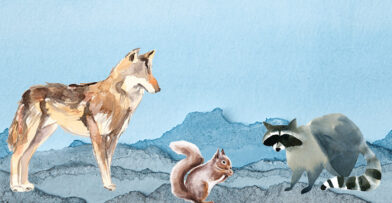It’s peak deer season at the Center. September through December is mating season, and evidence of white-tailed deer activity abounds if you know what to look for. During this time, termed the rut, this animal’s driving purpose is to mate, and as such there are behaviors that deer engage in that are unique. As you spot the signs of these hormone-fueled white-tailed deer, it’s good to know about what motivates the various behaviors behind what you find on the trail.
Signs of Deer
A great thing about early snow is that it provides the ability for people to see tracks. They are probably the first thing alerting hikers to the presence of deer. Tracks can lead people directly to them, or to their activity, such as signs of a buck rubbing on tamarack trees, which deer prize for their scent. The evidence of this behavior is called a rub, which is the scraped off bark of trees where males have cleaned their antlers of velvet coating. They clean off the velvet because females are attracted to polished, clean antlers, and it is a prime example of mating behavior.
Another way for males to get attention is to dig in the ground near a tree and leave their scent by depositing urine in the churned up dirt. The scent is designed to alert females that a male motivated to mate is in the vicinity. The hole left behind is called a scrape. On the way to get to a tree where they leave the scrape, people can see signs of deer in the form of scat, or droppings, as well as patches of fur left on trees.
What Deer Eat
Most of these signs take place in areas where white-tailed deer congregate, where there is a good concentration of food. They like the edge of the forest near fields, where there are low-growing plants that provide nutritious material to eat. Deer are browsers instead of grazers, eating large amounts of twigs instead of grassy material. When a deer has been eating twigs, it leaves behind something called browse, which are markings on the branches where it pulled off the end of the woody stem. These creatures don’t have top teeth, so they literally pull off the twig rather than bite it off.
Schlitz Audubon is a perfect habitat for deer, as the low woody growth in the forest and near the prairies provides the best variety of diet for them. In the winter, a prime food source is white cedar, red osier dogwood, and basswood. As a non-woody food source, they also like ladybugs, which exist in congregations on the floor of the forest.
There is something majestic about seeing a white-tailed deer or a buck close up, and visitors hiking at Schlitz Audubon have a good chance of seeing one. It’s a stress-free environment and with deer focused on mating, they are more visible this time of year. Some bucks may grow large and display sizeable antlers, so the next time you’re hiking at the Center and spot a buck, count how many antler points it has. Though the Center’s deer are accustomed to people, they are still wild creatures and should be appreciated at a safe distance. People should refrain from feeding the deer as well. Enjoy this deer-friendly habitat for what it can show you about the deer’s mating season that applies throughout the region.


